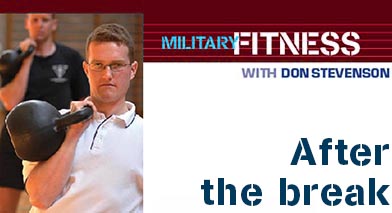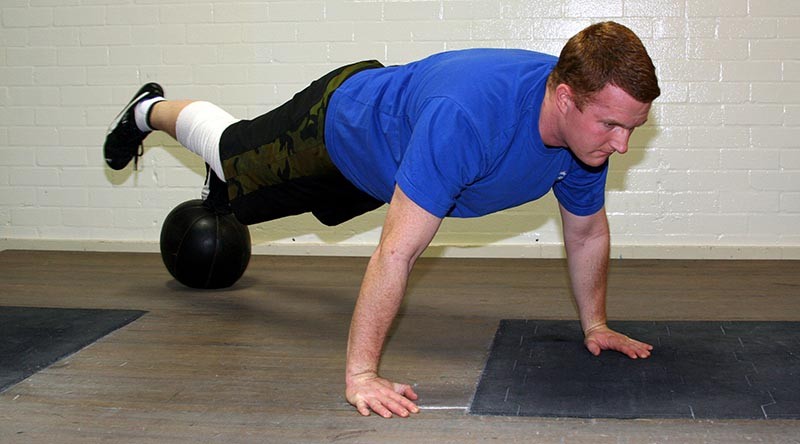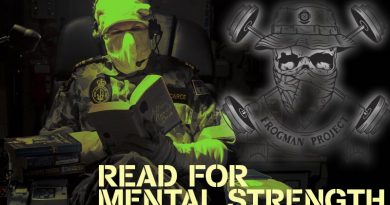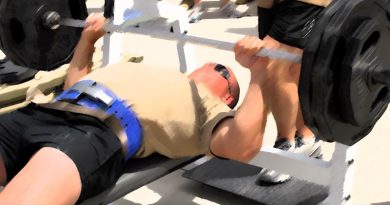Military Fitness – Part 9


Last instalment I talked about preventative strategies for some common military-fitness
injuries and, hopefully, those tips will help you avoid any overuse injuries.
Unfortunately, the nature of military work will always see some injuries that can’t be avoided no matter how rigorous your training.
Acute injuries such as broken bones, dislocations and sprains can occur during regular military activities and operations and, of course, in this day and age there is a distinct possibility of sustaining combat-related injuries or wounds.
 Couch to Commando by Don Stevenson is a 165-page e-book with programs in 6 different levels to progress anyone from couch potato to commando candidate.
Couch to Commando by Don Stevenson is a 165-page e-book with programs in 6 different levels to progress anyone from couch potato to commando candidate.
20% of proceeds from the sale of this e-book will be donated to Soldier On
So what should you do if you suffer an injury with the promise of a long rehab process?
While it may sound like a good idea to sit on the couch and watch TV, to do so will only make you fat, unfit and facing an even longer uphill struggle to get back into shape once the medical personnel clear you to begin training again.
When you suffer a serious injury it’s basically going to put either a leg, an arm or your lower back/torso out of action and limit you to exercises that use the other two areas.
As you rehab, you may be able to start adding exercises that use the injured area in a non-impact manner – such as cycling for injured knees.
Also, keep in mind the need to maintain all aspects of your fitness including strength, muscular endurance, cardio fitness and flexibility.
Having a broken leg is not an excuse to do nothing but bicep curls and bench press for 8 weeks!
So let’s look at some workout strategies and exercises that can be used to maintain your fitness while you are dealing with a serious injury.
Cardio: If you’ve injured a knee or an ankle or have broken a leg, then running is probably out of the question for a while.
Depending on the injury, though, you may be able to row or cycle but if those options are closed as well, it’s time to get creative.
Swimming may be a viable alternative.
However, my preferred method of cardio conditioning for people with leg injuries is circuit training, with a variety of upper-body and core drills.
A number of the workouts from sites like www.crossfit.com can be modified to replace squats with extra core exercises, while still keeping a very high cardio load.
Try the following legless workouts:
- Complete as many rounds as possible in 20 minutes of 5 pullups, 10 pushups, 15 situps.
- Complete 4 minutes of tabata intervals (20 sec on/10 sec off) of each of the following exercises; chinups, pushups, heavy bag punching, situps. Complete 16 minutes without a break.
Strength: Injuries can sometimes even be a blessing in disguise, allowing you to focus on developing strength in one area while another area is out of action.
Once again, you may have to get creative with working around an injury, but this can lead to some very good workouts.
Take a look at the following examples.
Squats; back squats can be tough on the lower back when you are recovering from core and shoulder injuries. Try versions such as front squats which are easier on the shoulders and lower back but tougher on the stabilisers of the core.
Chinups and dips; legs completely out of action? Work on weighted, high-rep and gymnastic-ring chinups and dips. You can never have enough chinup and dip strength and, if you get really adventurous, you could even learn to do a muscle up (chinup to dip support on rings), a move which will make surmounting walls and other obstacles a breeze.
Core: I’ll admit I’m not a huge fan of doing so-called core-stability work on wobble boards and swiss balls, except as required by physiotherapy.
However I am a huge fan of developing lower-back and abdominal strength through difficult bodyweight exercises and weighted core work such as gymnastic L sits and other holds on rings or parallel bars – and these are an excellent thing to learn while injured.
Unilateral work: If one arm or leg is out of action there is no reason to stop working the other!
While it’s probably not a great idea to do a six-week right-arm bicep specialisation program, it is a good idea to keep the uninjured limb moving.
A large component of strength is neural, and by working your good side you’ll actually maintain strength in the injured side and enhance it’s recovery once your injury has cleared up.
One-armed snatches, clean and press, deadlift and pushups are all fantastic exercises to put into strength workouts or conditioning circuits.
One-legged squats and deadlifts are just as good, although a bit trickier.
Unfortunately, I could probably fill a book with various scenarios and strategies for working around injuries and, really, it’s going to come down to case-by-case program design.
.
.

.
.

.






